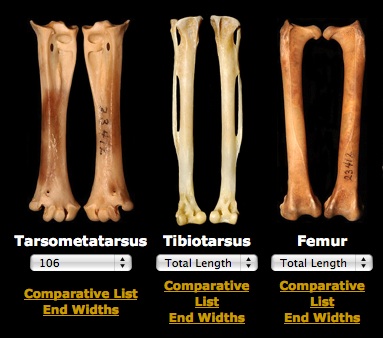I made a post the other day on a cool M.A. thesis about how to tell deer, bear and human wrist and ankle bones apart. Identification of bones is one of the essential specialist activities in archaeology: the bones don’t come out of the ground labelled, and yet they are a key way to understand past diet, behaviour and environmental change. Being able to identify a bone from the ground to the species it comes from requires a collection of bones of known species – a comparative collection – and these do not grow on trees. They are laborious to produce and finicky to curate. The one at the University of Victoria, for example, contains over 1,500 skeletons and is in constant use by archaeologists and biologists, not to mention the awesomely talented people at Pacific IDentifications. Mind you, the UVIC collection is one of the best anywhere in North America, but most archaeology departments and even many consulting archaeologists attempt to have a basic comparative collection on hand. This is a burdensome chore!
While looking at pictures will never be a substitute for a three-dimensional bone for comparison, it can nonetheless be better than nothing. It is therefore nice to see a really useful, if preliminary, set of web pages at the Royal B.C. Museum on Avian osteology.
The site is not actually from the archaeology section down there – rather it is the work of Michael McNall, collections manager of ornithology. Currently it “only” holds images and measurements from the Falconiformes and Strigiformes of B.C. – that is, the birds of preys: falcons, hawks, eagles and owls. These number 32 different species, and each has a variety of pictures and measurements of its bones presented in a useful and straightforward way. Naturally it would be nice to see examples of the more common archaeological species – those which form an important part of the First Nations subsistence base, such as a the alcids (murres, murrelets, guillemots, etc), which are ubiquitous in many outer-coastal sites.
However, I can’t really complain – this is a gift to archaeology and a very attractive and well-presented web site to boot.




I really like this website – what a useful way of getting the collections out to remote corners of the province and the world. I too look forward to more species.
I would love to see something equivalent for anthropological and archaeological collections as well. High quality imagery, easily searched. Maybe RBCM will recognise that this is the quality they should be aiming for on their website and support these initiatives all over the disciplines.
LikeLike
We know they do have an online photo image database – someone posted a salish river canoe from there – but the interface is very, very user-hostile.
A lot of the first wave of web-based collections are now obsolete. Bandwidth was an issue then which it isn’t now, so pictures were grainy and sometimes useless. FN sensitivities weren’t always considered, so descriptions and some objects were posted which might not be. Nonetheless, I suspect that high-res pictures of most of these sorts of things already exist (not just RBCM, but BC Archives and CMC, and Glenbow, to name a few). So a big chunk of the ffort is done: resample the images to a higher resolution.
Then, bring in a user interface specialist who can use modern web tools to link through mySQL or similar to the underlying database, which also already exists.
I wouldn’t be surprised if a competent co-op computer science undergrad could implement and clean up the latter with no problems. My point being, the infrastructure is there but needs modernizing and it might be possible to create a really slick and usable web site without going back to square one.
LikeLike
This is a pretty epic database:
http://macro.dokkyomed.ac.jp/mammal/en/mammal.html
Sample:
http://macro.dokkyomed.ac.jp/mammal/en/species/elephas_maximus.html
Cheers.
LikeLike